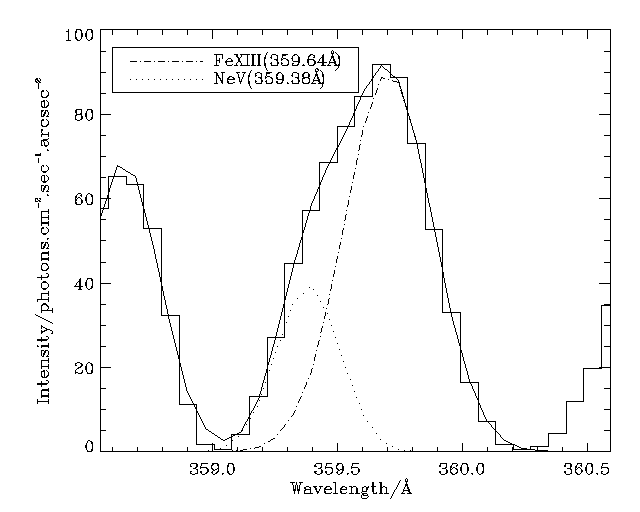

The Fe XIII ion provides a number of EUV lines in the NIS range that would seem to be very suitable for measuring electron densities in the 10^8 to 10^10 cm^-3 range. We have found a significant blending problem with these. The line ratio in particular that needs to be examined carefully is the 359.64/348.18Å one. This is mentioned by Mason et al. (Solar Phys. (1997) 170, 143). However, the 359.64Å line is blended on the short-wavelength side with a Ne V line at 359.378Å, a transition region line, which is an important matter for quiet-Sun data.
The Fe XIII 359.64Å line is also blended on the long-wavelength side by the Fe XIII line at 359.83Å (see the SERTS active region wavelength list of Thomas and Neupert ApJS (1994), 91, 461). The SERTS intensity ratio is 359.64/359.83Å = 7 or so, which according to Chianti would lead to a density of more than 10^10 cm^-3. In quiet-Sun CDS data we have looked at, the ratio is about 2 (density of about 10^9 cm^-3). The Ne V line is of comparable intensity to the 359.83Å line.
It appears that 359.64/348.18Å has been used to derive Ne's from active regions which may not be too wrong as the Ne V line is then very weak.
The figure shows the spectrum near the Fe XIII line at 359.64Å, indicating clearly the presence of the Ne V line as a shoulder on the blue wing of the 359.64Å line.
